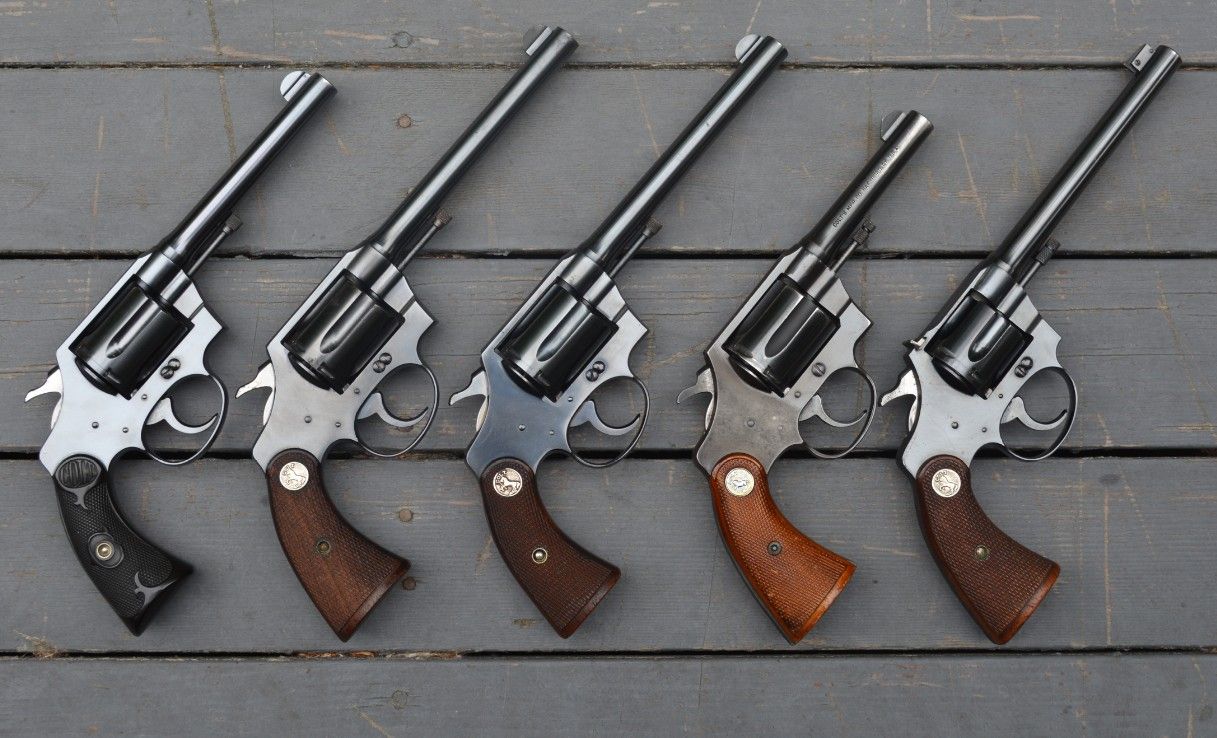With the action un-cocked, any rotational movement of a Colt cylinder is of no importance, as long as the cylinder stays locked and the cylinder cannot be rotated backward.
This is also true of most any other brand of revolver.
What counts in the older Colt action is when the trigger is pulled. Then the cylinder should be tightly locked and have no rotational movement.
This is true ONLY for older Colt DA revolvers, NO other brands or the newer Mark III and later DA revolvers.
All other brands and the newer Colt's will NOT lock up tightly when the trigger is pulled, even if they seem to be tightly locked.
Here's my instructions on how to check an old model Colt action for correct timing..........
BOLT RETRACTION AND "SNAP BACK".
Open the cylinder and look at the small "lug" in the bottom of the cylinder window. This is the cylinder locking bolt.
Cock the hammer, and watch as the bolt retracts into the frame and pops back out.
The bolt MUST begin to retract THE INSTANT the hammer begins to move.
There MUST be NO (ZERO) hammer movement possible before the bolt starts to retract.
The bolt should retract smoothly with no hesitation until it's fully retracted, then it must pop back out with a clean "snap".
There should be no hesitation, and no amount of "creeping" back out.
CYLINDER UNLOCKING.
Close the cylinder.
Use your left thumb or fore finger to again cock the hammer, closely watching the cylinder bolt as you SLOWLY cock the hammer.
As the hammer comes back, the bolt will retract away from the cylinder.
The bolt must retract far enough to unlock the cylinder BEFORE the cylinder begins to rotate.
If the bolt is still slightly engaged with the cylinder lock notch, the cylinder will be attempting to turn while still partially locked.
This produces a "catch" or "hard spot" in the trigger pull and will damage both the bolt and the cylinder lock notches.
This often appears as metal "pulled out" of the lock notches, with rounded off and burred notches.
BOLT DROP TIMING.
Continue to cock the hammer, LIGHTLY laying your right index finger on the cylinder just enough to prevent "free wheeling".
Watch for the bolt to drop back onto the cylinder. WHERE the bolt drops is CRITICAL.
The bolt MUST drop onto the leade or ramp in front of the actual cylinder notch.
If the bolt drops too soon, (in front of the notch ramp), it will mar the finish of the cylinder.
The bolt should drop into “about” the middle of the ramp.
If the bolt drops late, (farther toward the actual locking notch) the revolver may display "cylinder throw-by".
In this condition, during double action shooting the cylinder may rotate PAST the locking notch, and fire in an unlocked condition.
It's the nature of the Colt action, that a hesitant or jerky trigger pull by the user can induce throw-by in even a properly tuned Colt.
The Colt trigger should be pulled with a smooth, even pull, with no sudden jerks at the beginning.
CYLINDER LOCKUP.
Continue to pull the hammer back and both watch and listen for the bolt to drop into the cylinder lock notch.
The bolt must drop into the actual lock notch before or just as the hammer reaches full cock.
The most common Colt mis-time situation is the hammer cocks before the bolt drops into the lock notch. (Hammer is cocked, but cylinder isn't locked).
In this condition, with the hammer fully cocked, you can push the cylinder slightly, and you will hear the "CLICK" as the bolt drops into lock.
In my experience, most Colt's leave the factory with the bolt dropping a little late into the leade, but usually wear in to correct timing.
If the bolt drops onto the cylinder early, no real problem, but there will be extra finish wear.
If the bolt drops late (closer to the lock notch) the cylinder may "throw by" or rotate TOO far in double action and this can cause off-center primer hits and firing while unlocked.
Each of these checks should be done on EACH chamber. All of these checks are better done individually. In other words, do the bolt retraction check on all six chambers, then do the bolt drop test, and so on.
A properly tuned Colt will:
Have a smoothly functioning bolt with no sticky or hesitant movement.
Unlock before the cylinder begins to turn.
The bolt will drop onto the middle of the ramp.
The bolt will drop into the lock notch just before or as the hammer reaches full cock.
Have a smooth trigger pull, which does "stack" or get heavier as the trigger is pulled.

